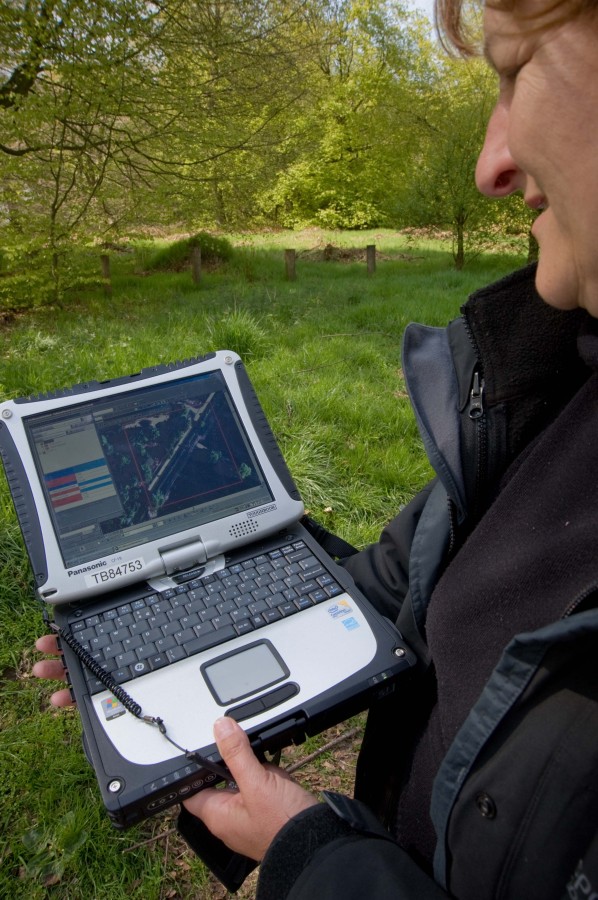We use some essential cookies to make this website work.
We’d like to set additional cookies to understand how you use forestresearch.gov.uk, remember your settings and improve our services.
We also use cookies set by other sites to help us deliver content from their services.

The National Forest Inventory (NFI) monitors woodland trees in Britain, yet many trees do not grow in woodland, but are found singly, in hedgerows and in parks and gardens, or as small wood features in both agricultural and urban landscapes. These trees outside woodlands are important natural resources and make...
This journal paper investigates the factors that drive deer damage to woodlands using the National Forest Inventory sample square data. We found that the likelihood of damage to trees depends on cross-scale interactions between climate, deer density and landscape structure. The complex interactive effects uncovered are difficult to interpret. We...
In 2017, deliveries of UK roundwood (softwood and hardwood) totalled 11.2 million green tonnes, a 2% increase from the previous year (Tables 2.5 and 2.6). Most UK roundwood deliveries (93%) were softwood and totalled 10.5 million green tonnes in 2017 (Table 2.5). 6.6 million green tonnes (63% of UK softwood...
An analysis of relevant species trials was carried out to assess the productivity of potential alternative conifer species to Sitka spruce on upland site types in Britain. Data from 87 forest experiments planted between 1929 and 1995 were analysed to compare long-term performance of 52 species with that of Sitka...
A list of all literature available (updated to December 2015) about Dothistroma in alphabetical order (M-Z)
The Home Office and Devolved Administrations produce estimates of the number and area of wildfires each year, using data recorded by Fire and Rescue Services using the Incident Reporting System. These figures were previously produced by the Department for Communities and Local Government. By analysing the wildfire data with the...
The pine-tree lappet moth has caused severe defoliation of Scots pine trees on many occasions in Eastern Europe. An initial assessment of the potential impact of the moth in Britain is that it presents a significant threat to the pine forests of northeast Scotland – and further afield if allowed...
The Home Office and Devolved Administrations produce estimates of the number and area of wildfires each year, using data recorded by Fire and Rescue Services using the Incident Reporting System. These figures were previously produced by the Department for Communities and Local Government. By analysing the wildfire data with the...
The Home Office and Devolved Administrations produce estimates of the number and area of wildfires each year, using data recorded by Fire and Rescue Services using the Incident Reporting System. These figures were previously produced by the Department for Communities and Local Government. By analysing the wildfire data with the...
Introduction This chapter contains information about UK imports and exports of wood products, and about the level of apparent consumption estimated from data for UK production, imports, and exports. Most information on imports and exports come from the Overseas Trade Statistics compiled by HM Revenue & Customs. Estimates are provided...
Introduction This chapter contains information about UK imports and exports of wood products, and about the level of apparent consumption estimated from data for UK production, imports and exports. Information on imports and exports mainly comes from the Overseas Trade Statistics compiled by HM Revenue & Customs. Estimates are provided...
Introduction This chapter contains information about UK imports and exports of wood products, and about the level of apparent consumption estimated from data for UK production, imports and exports. Information on imports and exports mainly comes from the Overseas Trade Statistics compiled by HM Revenue & Customs. Estimates are provided...
Cookies are files saved on your phone, tablet or computer when you visit a website.
We use cookies to store information about how you use the dwi.gov.uk website, such as the pages you visit.
Find out more about cookies on forestresearch.gov.uk
We use 3 types of cookie. You can choose which cookies you're happy for us to use.
These essential cookies do things like remember your progress through a form. They always need to be on.
We use Google Analytics to measure how you use the website so we can improve it based on user needs. Google Analytics sets cookies that store anonymised information about: how you got to the site the pages you visit on forestresearch.gov.uk and how long you spend on each page what you click on while you're visiting the site
Some forestresearch.gov.uk pages may contain content from other sites, like YouTube or Flickr, which may set their own cookies. These sites are sometimes called ‘third party’ services. This tells us how many people are seeing the content and whether it’s useful.